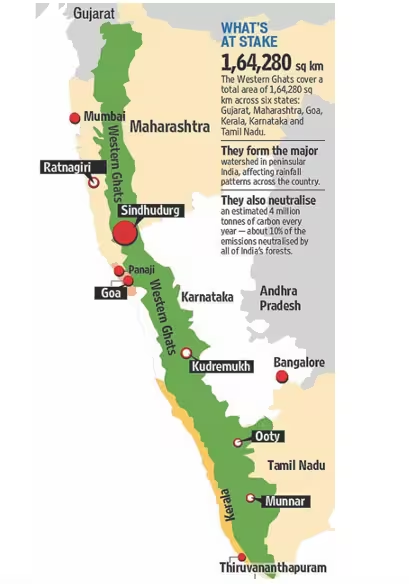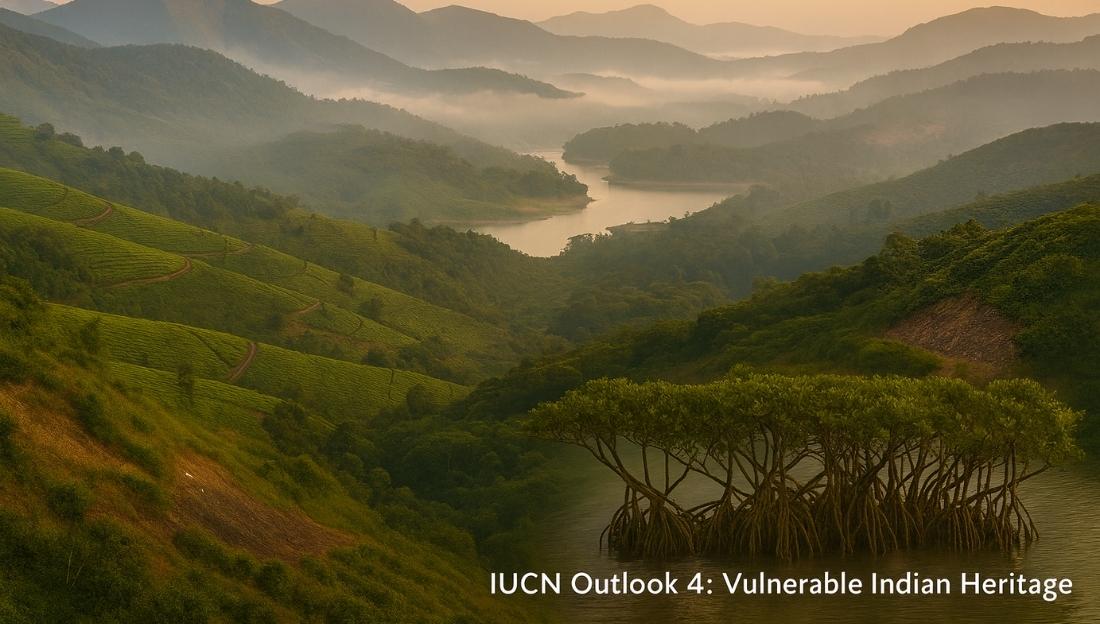The International Union for Conservation of Nature (IUCN) in its World Heritage Outlook 4 Report has flagged India’s World Heritage Sites of “significant concern” due to increasing environmental threats.
IUCN’s World Heritage Outlook 4 Report
- The World Heritage Outlook 4 (2025) evaluates over 200 natural and mixed World Heritage Sites globally, assessing their conservation status and threats.
- It classifies sites into four categories:
Good, Good with some concerns, Significant concern, and Critical. - For the first time, the share of sites with a positive conservation outlook has declined notably, indicating worsening protection levels.

Major Threats Identified in South Asia
- Climate Change: Rising temperatures and changing rainfall patterns are damaging habitats and altering species distribution.
- Tourism Pressure: Unregulated tourism leads to waste generation, habitat disturbance, and increased human–wildlife conflict.
- Invasive Alien Species: Non-native plants such as eucalyptus and acacia threaten native flora and forest structure.
- Infrastructure Development: Roads, hydropower dams, and railways are fragmenting habitats and increasing wildlife mortality.
- Additional issues include forest fires, illegal logging, encroachments, hunting, and waste disposal.
Status of Indian World Heritage Sites
- Significant Concern: Western Ghats, Manas National Park, Sundarbans National Park.
- Good with Some Concerns: Kaziranga, Keoladeo, Nanda Devi–Valley of Flowers, Great Himalayan National Park.
- Good: Khangchendzonga National Park, Sikkim.
Why the Western Ghats Are Endangered
- Among the world’s oldest mountain ranges, the Western Ghats host high biodiversity with over 300 threatened species.
- Major challenges include:
- Construction of hydropower and dam projects like the Sillahalla Pumped Storage Project.
- Expansion of agriculture and plantations replacing native ecosystems.
- Climate-induced shifts forcing species to move to higher altitudes.
- Garbage and plastic waste from tourism affecting wildlife.
- Spread of invasive species degrading forest health.
Threats to the Sundarbans
- Increasing salinity, heavy metal contamination, and unsustainable resource extraction threaten mangrove health.
- Sea-level rise and frequent cyclones further reduce biodiversity and habitat stability.
Global Context and Significance
- Natural World Heritage Sites cover less than 1% of Earth’s surface, yet sustain over 20% of global species richness.
- The report aligns with the Kunming–Montreal Global Biodiversity Framework, urging urgent conservation action to prevent biodiversity collapse.
INTERNATIONAL UNION FOR CONSERVATION OF NATURE (IUCN)
- The IUCN is a global organization founded in 1948 that works for the conservation of nature and sustainable use of natural resources.
- Key Function:
It maintains the IUCN Red List of Threatened Species, which assesses the extinction risk of plant and animal species worldwide. - Headquarters & Membership:
Headquartered in Gland, Switzerland, it brings together governments, NGOs, and experts from around the world to promote biodiversity conservation and environmental policy-making.
Conclusion
The IUCN report serves as a warning and a roadmap — urging India and other nations to strengthen conservation, regulate tourism and infrastructure, and restore natural ecosystems to safeguard their priceless biodiversity.
This topic is available in detail on our main website.





